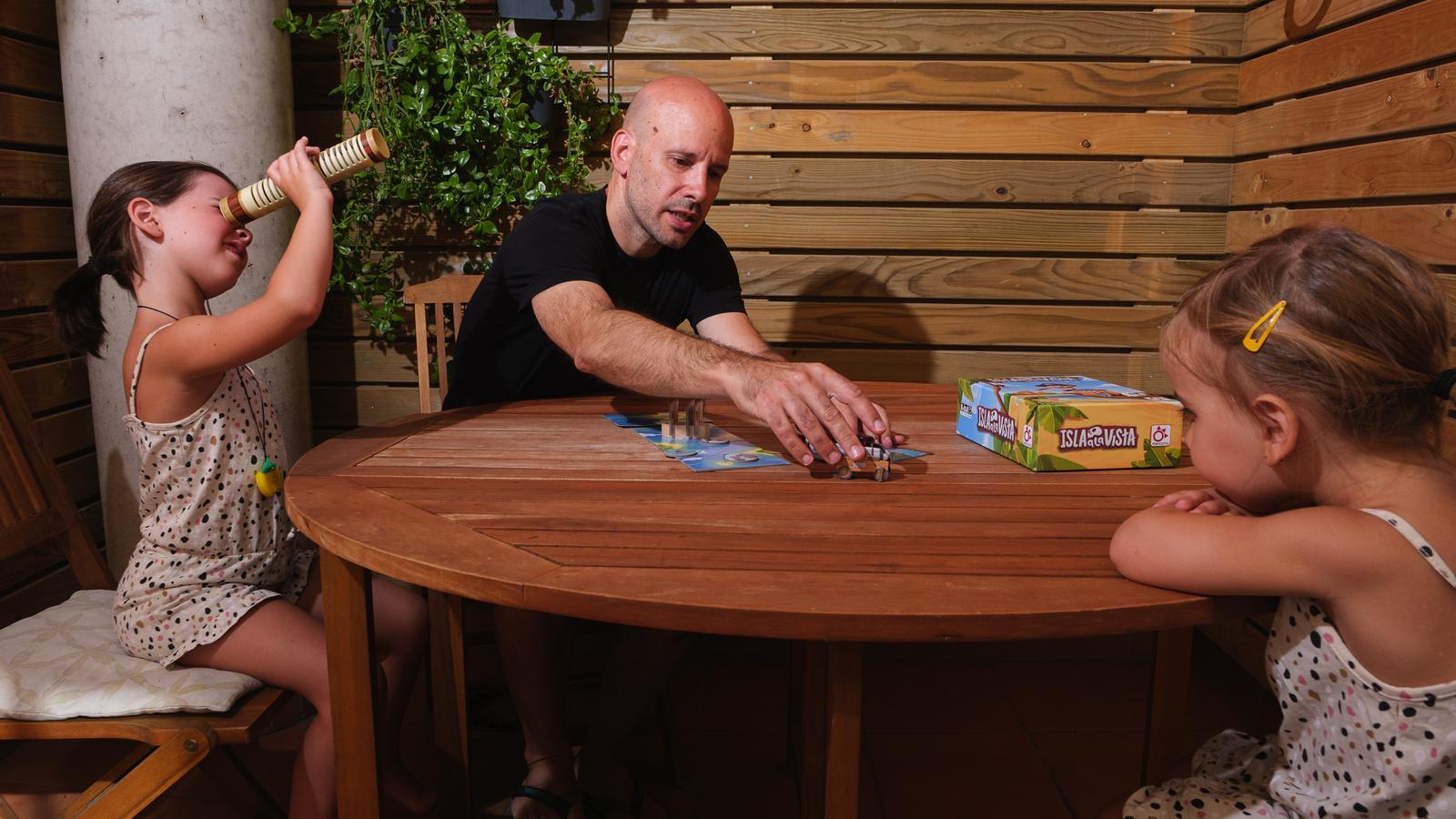The Catalan board game that has broken into the best in the world
'Isla a la vista' has been recognized with the prestigious Spiel des Jahres award, placing it among the six best children's board games


BarcelonaJust a few months ago, Gerard Ribas managed to break into one of the most prestigious lists for board games, the German Spiel des Jahres (Game of the Year), which annually recognizes the best board games in the world. In this case, the award recognized him in the children's category. Thanks to his game Island in sight, it reached a ranking in which two more games from our home team had already debuted, Sherlock –co-created by Martí Lucas and Josep Izquierdo– and Baobab, by Josep Maria Allué.
Cooperative and memory game
Island in sight (Mercury) is Ribas's first game, inspired by his eldest daughter, Pepa, shortly before the COVID-19 pandemic hit. It was 2019, and Pepa was two years old. Now she's the eldest of three sisters. "The goal was to try and create something to play with her. I'm not sure if I wanted to make a pirate game and then found a way to do it, or if it was the other way around," explains the author, who, instead of competing, proposes that the children playing collaborate to achieve a common goal: finding the hidden treasure. The game kicks off when a group of pirates catch a glimpse of an island map with hidden treasure and decide to go looking for it.
Ribas points out that, in general, memory games aren't very experiential or immersive. Island in sight, Instead, it has introductory stories that help put the children in context. They explain that they all belong to a band of small pirates who manage to see, for a few seconds, the treasure map of a large pirate company. "The goal from then on is to try to find the treasure before the big pirates do," he points out. The immersive aspect is achieved thanks to the game's elements: a spyglass with which the children try to visualize the elements they've seen on the treasure map on the surrounding islands, and a cannon with which they roll the dice and also attack the big pirates' ship if they cross paths during the adventure.
Multilevel experience
"Children can play alone, but if there's an adult to guide them, it will be much more enriching," Gerard Ribas points out. Island in sight Each player takes on a role. One person looks through the spyglass and describes what they see on the islands, which is sometimes more obvious, sometimes less so. The group must then agree on whether what is being described also appeared on the island map they initially saw, and decide whether to zoom in or not. The spyglass is then passed to the next player, and so on until all three or five elements (depending on the difficulty) on the treasure map island have been identified.
The fact that children have to take on several roles throughout the game also means that children can play from age three to six. The game also has three difficulty levels, which, as Ribas points out, "are actually six, because each level has two types of map to choose from: one illustrated, as seen through the glasses, and one mapped." Thus, younger children only have to identify three elements of the treasure island, and older ones, five. In the most advanced level, there are seven or eight drawn elements, but only five need to be chosen; "the others are just to mislead."
The game's versatility allows players to find a balance between skill levels. The idea for different difficulty levels was a contribution from the Ludo Association, a non-profit organization that brings together board game creators from Catalonia and Spain. "Once the game was created, I was able to try it out at one of their meetings, and they suggested creating several difficulty levels to broaden the audience," recalls the author, who now admits that his creative work must be done "clandestinely, at night, while the rest of the family sleeps."
Present and future of the sector
Today Island in sight The book—which has sold 7,000 copies in two years across Europe—isn't available in Catalan, but it is in German, English, French, Russian, and soon, Korean. Before meeting Mercurio, the publisher that ultimately released it, Ribas contacted El Pot Petit to see if they would be interested in publishing it in Catalan, but they were in the middle of a rebranding process and it didn't work out. "Perhaps when Mercurio grants me the license again, I'll try again with them or another publisher," he says.
The board game market has been growing, especially since the pandemic, which Ribas attributes to two key trends: the decline in screen time during childhood and the desire to spend quality time as a family. Ribas also believes that, "generally speaking, board games are inexpensive: for 15 euros you can play 25 or 50 times." As a family, he continues, "it's very rewarding to be all together around the table having a good time," and he's pleased that there are publishers promoting children's board games and importing excellent titles. "There are Catalan authors, such as Ferran Renalias, Dani Garcia, Guillem Coll, and Eugeni Castaño, among others, who are publishing extensively, and there's a fairly well-established board game culture that will only continue to grow," predicts the author ofIsland in sightHe points out that, in the creative field, the sector is quite male-dominated, with women making up only about 20% of authors. "We need more female creators," concludes Gerard Ribas.
